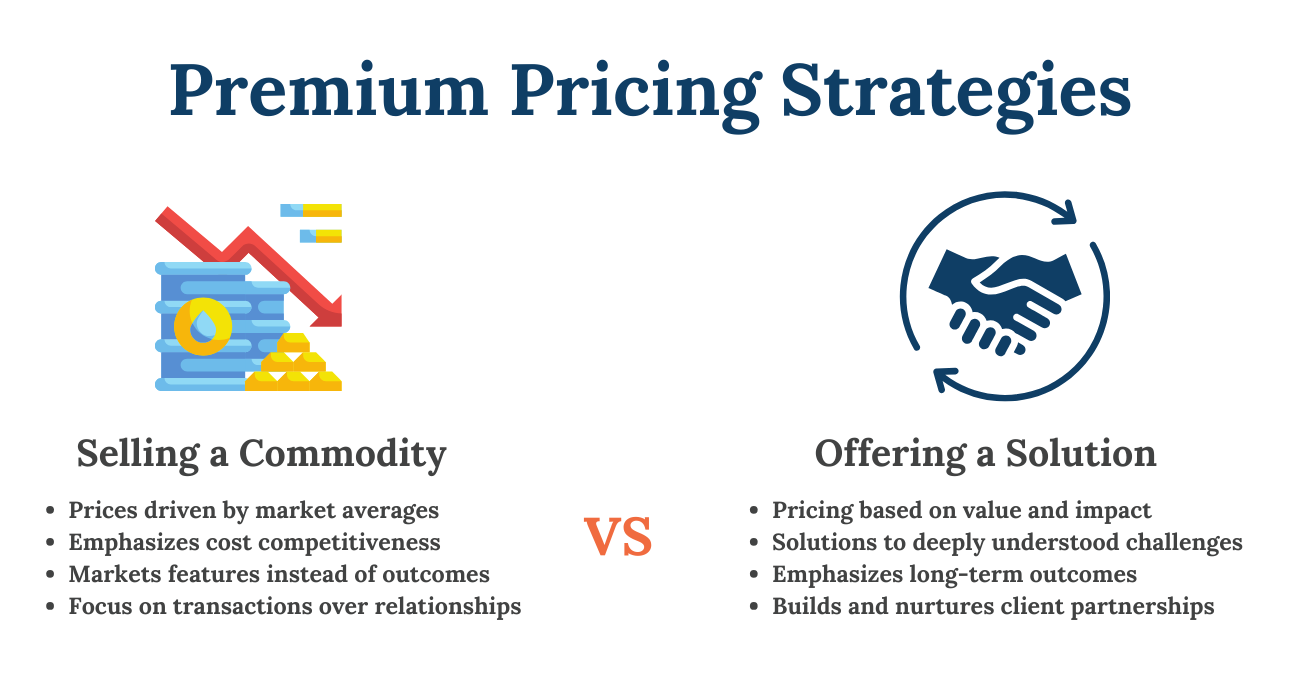How to Be an Entrepreneur in 2024: 15 Tactics Revealed written by John Jantsch read more at Duct Tape Marketing
The Duct Tape Marketing Podcast with John Jantsch

In this episode of the Duct Tape Marketing Podcast, I interviewed Paul Cheek, a serial tech-preneur, educator, and software engineer. Paul Cheek is also a senior lecturer at the Massachusetts Institute of Technology in the MIT Sloan School of Management and the co-founder of Oceanworks. Our discussion covers the intricacies of entrepreneurship, focusing on the 15 tactics outlined in his latest book, “Disciplined Entrepreneurship Startup Tactics.”
Key Takeaways
Questions I ask Paul Cheek:
[01:47] What is disciplined entrepreneurship
[04:02] Do the tactics of disciplined entrepreneurship begin with vision?
[06:30] How do you ensure the vision is shared organization-wide?
[07:50] How do you tie OKRs to shared vision and goals?
[09:59] How are OKRs, visions and goals applied in OceanWorks?
[12:00] How do the illustrations in the book augment the entire message?
[14:39] Do you have a favorite tactic?
[18:52] Talk about the easter eggs laid across the book for reader to discover?
[22:53] Is there some place you’d invite people to connect with you, and grab a copy of Discipline Entrepreneurship Startup Tactics
More About Paul Cheek:
Like this show? Click on over and give us a review on iTunes, please!
Connect with John Jantsch on LinkedIn
This episode of The Duct Tape Marketing Podcast is brought to you by ActiveCampaign
Try ActiveCampaign free for 14 days with our special offer. Exclusive to new customers—upgrade and grow your business with ActiveCampaign today!
Speaker 1 (00:00): I was like, I found it. I found it. This is what I’ve been looking for. I can honestly say it has genuinely changed the way I run my business. It’s changed the results that I’m seeing. It’s changed my engagement with clients. It’s changed my engagement with the team. I couldn’t be happier. Honestly. It’s the best investment I ever made. What
Speaker 2 (00:17): You just heard was a testimonial from a recent graduate of the Duct Tape Marketing certification intensive program for fractional CMOs marketing agencies and consultants just like them. You could choose our system to move from vendor to trusted advisor, attract only ideal clients, and confidently present your strategies to build monthly recurring revenue. Visit DTM world slash scale to book your free advisory call and learn more. It’s time to transform your approach. Book your call today, DTM World slash scale.
John (01:03): Hello and welcome to another episode of the Duct Tape Marketing Podcast. This is John Jantsh. My guest today is Paul Cheek. He’s a serial tech entrepreneur, entrepreneurship educator and software engineer. He is a senior lecturer at the Massachusetts Institute of Technology in the MIT Sloan School of Management, the executive director of the Martin Trust Center for MIT Entrepreneurship and the co-founder of Today we’re going to talk about his new book, disciplined Entrepreneurship Startup Tactics, 15 Tactics to Turn Your Business Plan into a Business. Paul, welcome to the show,
Paul (01:42): John. Thanks for having me.
John (01:44): Alright, so first let’s define what is disciplined entrepreneurship as opposed to, what’s a good answer now? Unruly entrepreneurship?
Paul (01:54): Yeah, yeah, it’s a good question, right? And you think about it, it’s not what people would usually jump to when they think of entrepreneurship, this idea, and I think even before we do that, John, we’ve got to define what is entrepreneurship. Well, that’s true, and this is first couple sentences of the book, right? Entrepreneurship is about more than just startups. It’s about more than just going and building new companies. It’s about doing more than is probably reasonable with however much time, however much money you have control of. And that might be in a startup, it might be as a founder of a startup, it might be as an early employee, as a startup. It might also be in Big Co. It might be in a big large company. It could be in a nonprofit, it could be anywhere. And so what is discipline entrepreneurship? It’s taking a structured systematic approach to having an outsized impact, whatever your goal or your vision might be.
(02:45): And so when we think about that systematic structured approach, we’re thinking about this engineering approach to entrepreneurship. A lot of people think, and this is one of what I believe to be one of the most common misconceptions in entrepreneurs. Entrepreneurs, they wake up in the morning and they do whatever they want all day long. They spend their time however, they so choose whatever they’re going to be most interested in. And I believe that’s wildly misguided. The best entrepreneurs build structure into their lives, into their business to help them work towards that ultimate vision. And so discipline, entrepreneurship thinks about what’s the most structured approach we can take that’s going to increase our odds of success. And startup tactics is a continuation of the original discipline. Entrepreneurship, looking at not just what do we do to go and to start a new venture, whether that’s a new startup or within a larger organization. Startup tactics looks at how do you actually do it right? A lot of people know that they want to go start a company and they know generally what to do. The question is how do you take those first steps? How do you make sure you’re being as efficient with your resources as possible?
John (03:49): So a lot of times when people hear tactics, they start jumping to, oh, we need Facebook campaigns or whatever tactics you start, of course, and this is the right place to start. But I think a lot of people probably jump right over this with the idea of vision. You mentioned already, I mean, before we decide any kind of tactics, doesn’t it start there?
Paul (04:09): Yeah, absolutely. Right. It’s like, Hey, why are we doing this? And discipline entrepreneurship looks at this idea of personal detri or a reason for existence. We’ve got to know what’s our vision, where are we going? And the first tactic that entrepreneurs need is a really strong approach to setting goals. Like I said earlier, this idea that entrepreneurs wake up in the morning, they do whatever they want know. It’s like entrepreneurs have goals. They know what they’re working towards. Oftentimes what I see happen is entrepreneurs may have an amazing vision. They may have some goals, but then if you look at their daily to-do list, right? If we pull out the to-do list, there’s a bunch of things on there that don’t actually work towards that next milestone, that next goal. So we start with goals. We don’t have goals. We’re going to wind up doing a lot of things using our most precious resources to go and to achieve something, but that something doesn’t move us towards the end goal.
(04:58): And when I think about it, it’s something that everybody thinks they’re good at, everybody thinks they’re really good at setting goals, but when the rubber meets the road, when we actually look at those goals, we analyze ’em like, are those really good goals? We got to take a step back and revise. And the more we can build this skillset of setting goals, the better those goals are going to be on a recurring basis. Whenever we go and we begin that next stage of growth, whenever we think about what’s happening with our resource pool, are we getting, are we fundraising? Have we raised money? Do we have more people on the team? Have we lost a couple people? Were those people part-time? Were they full-time? Are we losing or gaining time or money? If we are, then our goals should evolve. They should change in an instant because if we have more time, we have more people on the team where we have more money, our goals should be more ambitious than they were prior. Likewise, if we lose somebody from the team, we’ve got less time and we need to reset on our goals. We’ve got to set realistic goals for our team.
John (05:56): So goals, vision, I think are really easy, especially sometimes in the startups. It’s like, this is why we’re doing this. This is what I’m passionate about. And then chaos hits and diversity hits and more people come onto the team. How do you take that vision and make sure that you’re aligning it and that it’s shared and that it’s the right one still?
Paul (06:13): Yeah, it, it’s a good question. Is it the right one still? That one that’s so context specific, that’s hard to really dig into the details of, but is it a shared vision? That’s a good question. And that has to be evaluated with every single person who comes onto the team. The thing that I do with companies in the earliest stages, we do this in our class at MIT, we will sit the founders down next to each other and we’ll say, why don’t you each grab a pen, grab a piece of paper, write down your vision of the future state of the world, what does the world look like with your innovation, with your business, once it’s been wildly successful, what is that future state of the world that you are working towards? And nobody’s allowed to talk during that exercise. And then we’ll say, all right, put your pens down.
(06:58): Let’s see what you came up with. Does it match what the other co-founders wrote down? And if it doesn’t, then we need to reevaluate as a team, because if one co-founder has one vision and another co-founder has another vision, even if they’re slightly different, they’re going in different trajectories. And over the course of time, they’ll move further and further apart. And the same thing is true of goal setting. Making sure that as we, and this is covered in the book, it’s like as we write down a goal, how clear is it? Is it open to interpretation? Are we going to come back if we’re doing quarterly goals and come back and in a few months and then look at them and say, yes, I think we achieved it, and somebody else says, no, we obviously didn’t achieve that. How open to interpretation are these goals? The clarity is super important.
John (07:38): Yeah. Yeah. So there’s a concept in the book that I was introduced to it. I want to give credit to Google or folks at Google, but called OKRs that shows up in this book as well. How do you tie OKRs to shared vision and goals and the fact that the founder has maybe different goals, I mean shared vision, but different specific goals than maybe team leaders?
Paul (08:03): Yeah, absolutely. Well, OKRs is introduced as one wait to set. Well, people say, oh, do we have to use ok? It’s like what goal setting methodology you choose. It doesn’t matter to me. What I care about is that somebody actually sat down and thought about these goals and we know why we’re doing what we’re doing. Our daily activities mapped to those goals and those goals mapped to our vision. When I think about it, it’s in the early stages of that entire co-founding team needs to be aligned on what these goals are and the fact that they do actually work toward that vision. As the team grows, as we add additional people, you’re going to have different goals for each team, and those teams are going to be responsible for having achieved their objectives. When I think about it, it’s, it’s got to trickle down, but in the early stages, when there is that chaos that you described, John, we’ve got to make sure that while none of these goals are open to interpretation, we have flexibility in them because things might change, our segment might change.
(08:56): We might run an experiment. We say, alright, we actually, we need to pivot that market segment a little bit. We’re going to have to revise the goals that are associated with it. And so just allowing for that flexibility and really just the constant communication around these goals. It’s not like we set them today and we come back to them in a few months. We could be constantly talking about these, and if those lines of communication are open, people are going to fall out of line Just in terms of where we’re going as an overall organization. But one of the things that we connect, a lot of these tactics are all interrelated. When we get to, for example, the tactic on building a product roadmap that has to directly tie to the organization level goals. So in the early days, everybody’s doing everything, but once you have a product team, making sure that the elements of the product roadmap tie back to the organization level goals is just so important. The same thing could be true with the marketing team and the sales team. Finding that alignment between each team’s goals with the overall organization level goals, to the point we try to drive home.
John (09:53): I love examples. People learn from examples, and we had a case of an example business called Ocean Works. How does Ocean work vision and goals and OKRs, and as you’ve kind of grown folks there, how are you applying this or how have you seen it applied at Ocean Works?
Paul (10:09): Yeah, I mean, for Ocean Works, you set goals, and as the business evolves, those goals change, right? The timescale for those goals has changed over the course of time. The goals themselves have become more refined. The team has gotten more familiar with the goal setting methodology, how to set them and to make sure that everybody is on the same page. So a lot of the stuff we’re talking about is absolutely manifested at Ocean Works in the first years of building the business and of course beyond as well.
Speaker 2 (10:37): It’s my pleasure to welcome a new sponsor to the podcast. Our friends at ActiveCampaign. ActiveCampaign helps small teams power big businesses with the must have platform for intelligent marketing automation. We’ve been using ActiveCampaign for years here at Duct Tape Marketing to power our subscription forms, email newsletters, and sales funnel drip campaigns. ActiveCampaign is that rare platform that’s affordable, easy to use, and capable of handling even the most complex marketing automation needs, and they make it easy to switch. They provide every new customer with one-on-one personal training and free migrations from your current marketing automation or email marketing provider. You can try Active Campaign for free for 14 days and there’s no credit card required. Just visit activecampaign.com/duct tape. That’s right. Duct Tape Marketing Podcast. Listeners who sign up via that link will also receive 15% off an annual plan. That’s activecampaign.com/duct tape. Now, this offer is limited to new active campaign customers only. So what are you waiting for? Fuel your growth, boost revenue and save precious time by upgrading to active campaign today.
John (11:50): So the book is beautifully illustrated. Obviously we don’t have all the pictures here to show, but I’m curious. That was probably an investment decision that you made. How do you feel like that? What do you feel like that adds to the book, particularly when it comes to the specific tactics?
Paul (12:06): These illustrations are so important, John, so important and all credit on the illustrations that you see here, Maria, Versace, fabulous, just fabulous. Those illustrations are really important to this book. Why? Because entrepreneurship and the pursuit of building a new business, that seems like something only entrepreneurs can do. Not everybody thinks of themselves immediately as an entrepreneur. So the illustrations are designed to make the book approachable. They’re designed to give it a little bit of life. You can go through and we can look at all these experiments and define variables and hypotheses, and then looking at database outcomes. That’s not as approachable as something that has some visual elements to it, but the illustrations are also designed to communicate. One of the elements of entrepreneurial math that we talk about, PDOs, John PDOs, you may know PDOs for solving equations. We look at it at MIT as an order of operations, not of parentheses and then exponents, et cetera.
(13:10): We look at it as what is the order of operations that we need to follow in terms of our actions to take that business plan and turn it into a real business? For us, that looks like starting with setting goals, those foundations. From there, it says, let’s go test the market before we’ve ever built product. Once we’ve got that line of customers waiting down the street to use this product, we think they want, but we haven’t built yet, let’s go build it. Right? Let’s go start that product development process. And then once we’ve got customers and we have products, we know what we need to continue to grow and scale this business, the time, the money, the team, and then we look at resource acquisition. It’s the order of operations through these different stages of the tactics that the illustrations help to convey. When we look at it, John, you go through this and the big thing that I really wanted to communicate is this idea that you’re starting down here in the jungle, in the foundations at the bottom, you’re working your way towards the big city in the background, but these tactics, it’s not like once you do them, you’re all done.
(14:12): You see the floor of the jungle in the beginning. It carries all the way through to the end. You see the green stripe going in the distance, and that’s because these tactics always carry on for you. You can learn them sequentially, but they’re executed in harmony, and I think that’s something that’s really important for entrepreneurs to understand. You can learn these as you go, and that’s a really important thing to do, but you can’t just say, oh, well, we set our goals now we’re done. Every time you take an action, those goals are revised.
John (14:39): So we’ve hit on a couple of the early stage tactics. I always love to ask authors this, especially when they have a number in their title. Is there one that’s like a favorite of yours or one we haven’t talked about that? Think I don’t want to talk about that one?
Paul (14:53): Yeah. I think for me, John, when I look at the different tactics in this book, there’s no silver bullet in entrepreneurship, right? Everybody. That’s important for entrepreneurs to understand, right? It’s not like the thing that I would call out in this process. It’s not one of the 15 tactics I would call out the market testing stage in particular. Everybody thinks, oh, I’m going to go build a product and then I’ll sell it. It’s like, well, what if you build it? You waste all the time and money that you have available to you and you go to try to sell it and nobody wants it. We’ve got to validate that there are customers who are going to buy our product before we’ve ever built the product. So when I look at market testing, it goes through four tactics. First and very importantly is market research. Market research specifically.
(15:33): Primary market research is one of the most important tactics that entrepreneurs can gain because that’s our process of learning. When we are a new business, we don’t have a whole historical data set like a big company hacks. We need to build up our own unique dataset of who are our customers in our new market that we are creating? What do they care about? We need to get to know them as well as we know some of our best friends, we use the information, we learn from them about the problems that they face. We’re going to try and communicate that out to the world. The problem is you hear a lot of startup pitches and they go on and on. They have so much to say about a new complex innovation that they’re developing. As a new startup though, you don’t have people who are going to pay attention to you forever.
(16:09): And so for that reason, entrepreneurs need to figure out how do we use the assets tactic? The second in the market testing stage, how do we communicate the value that we’re creating and how we create it in 10 seconds or less? How do we use an animation or a video or something that’s going to show our end users the value that we can create before we built a product in a very short period of time? While we can hold their attention, we use those assets in the two tactics within market testing that help us to actually talk to real customers and market to them and sell to them. That’s marketing and sales. Marketing. It’s like you think about corporate market. We could go take a class in marketing when you’re in the early stages of building a new business or when you’re in the early stages of building a new product at an existing organization is so different.
(16:54): Why? Because we need to be thinking about what is the fastest, cheapest, most data rich approach we can take to running a marketing experiment? It’s all rooted in kind of a scientific method, the marketing and the sales. It’s we have a hypothesis about what people want, who wants it, who those customers are. We’ve got to define our variables, run the experiment, come back with real data, and so specifically the market testing and marketing tactic looks at how do we leverage this mousetrap model, the mousetrap model of saying, we think this customer segment wants this value prop. Let’s put this value prop in front of that customer segment and see do they react? Not will they pay us, right? Not can we drive revenue? Can we drive conversions? It’s can we get them to give us the smallest form of currency that they have available to them?
(17:39): Things like an email address. Will they give me the email address to stay updated on the progress of this product? Will they join the newsletter? Maybe will they pre-order? If we can get them to give us just a little bit to validate and we come back with data and say, yes, a very large segment of the people who we’ve targeted with these demographic psychographics want what we think they do, that gives us the competence and conviction to move forward. It gives us data to say, yeah, we should go and invest and build this new product, this new innovative product. And the sales tactic looks at things like, how do we run that first outbound sales campaign? We don’t want to reach out to anyone and everyone. Let’s build a really targeted lead list of our core end user group. Let’s craft some messaging towards them with that value prop we want to test.
(18:22): Let’s start sending it out and watching this really closely, just like we would watch a science experiment and see what happens. What are the results? Do they come back to us? Do they click links? Things like that that give us the data. We need that unique data set to keep moving, and when nothing works, I think that’s a wonderful thing, right? Because we haven’t wasted a lot of time and money. We didn’t buy a billboard, we didn’t name a stadium. We ran a sub hundred dollars marketing experiment to see do people want what we really think they do?
John (18:51): So great deal of more to cover in this book, but I want to focus on the Easter Egg hidden in the book.
Paul (18:58): Which one’s that?
John (18:59): Well, I didn’t necessarily, the folks that Wiley, I think told us that there was several instances where you did some things in the book that you wanted people to discover.
Paul (19:10): There are a few things. I mean, the biggest one, the most exciting one to me is that within the book, you are going to find me in one of the illustrations and you can find one instance in the disciplined entrepreneurship, expanded and updated version, and one version in the startup tactics version. So that’s the biggest Easter egg there could possibly be. When I first saw it, I was so excited. On a more serious note, as you go through these books, there’s a couple Easter eggs. Most of those are right within the case examples. Every tactic has a case example that shows you not just, alright, here’s what to do, how to do it. Here’s an example of somebody who actually did that, and there’s two, I’m going to give you two because they’re tightly aligned. We think about how these tactics can be used in the course of building a brand new business, something that’s brand new to the world.
(20:01): We haven’t raised any money, we don’t have a team. We’re just trying to figure it all out, and there’s an amazing story. Within that references two students, co-founders, their names are Anisha and Madeline, and they started a business using this market testing and this marketing tactic that we just talked about, their company’s called Livy, matches up women who moved to new cities to make friends in small groups. Instead of one-on-one, and they didn’t build their product. They decided that they were coming through one of our classes at MIT. They said, look, we’ve got an amazing business plan and they do fabulous business plan. They said, let’s go see if we can get some people who really resonate with this value proposition. They took a very structured approach to testing different value propositions with their target core customer segment. What they did, the example, the detailed analysis that they did of the data that came back is hugely valuable to entrepreneurs, entrepreneurial marketers, folks who want to test value props because they came back with a list of 1500 women.
(21:03): It was actually 1800 women who wanted this value prop before they’d ever built any product. So that sure number, the volume of people who wanted what they could build provides confidence and conviction to go to build it. Definitely go check out their business too. Livy app is the website, and it’s one of those things, you just see this data come back. It’s so compelling. That’s a new business. The other Easter egg example I’d give you is a gentleman named Camilo Foco, a PhD student in the MIT computer science and artificial intelligence lab. Camilo amazing. He was kind of off of the race and he’d already raised millions of dollars, had a team of at least 20 people, if not more, when he sat down and used these tactics for the first time. There’s a wonderful example of how he conveyed his extremely complex artificial intelligence advertising software and all that it can do for a brand running advertisements to improve the effectiveness of those advertisements in sub 10 seconds. Extremely complex technology, huge value prop, a number of different functionalities to convey their animation, which there’s a link in the book for people to go check out the live animation. It’s one of the best examples of how to leverage that tactic, and Camillo and his team did a lot of other things leveraging different tactics, but I just think that example is gold. It’s something that entrepreneurs, that innovators can leverage to go and test, much like with the Libby example, test the value prop before they go much further to minimize investment in any new idea.
John (22:37): Don’t want to be out there solving problems that people don’t know they have. Right?
Paul (22:41): That’s exactly right. That’s exactly right.
John (22:43): Awesome. Well, Paula, it’s a pleasure having you on the show for a few minutes today. Is there some place you’d invite people to connect with you or certainly learn where they can pick up copies of discipline, entrepreneurship, startup tactics?
Paul (22:55): Oh, absolutely. Come find me on LinkedIn. Visit the books website, it’s startup tactics.net, and of course, grab a copy of the book and leverage all the tactics within to take that idea and turn it into a reality. Amazon, Barnes and noble bookshop.org available everywhere, and my big goal is to get this in the hands of more and more entrepreneurs. So if you know somebody who’s going to start a business or somebody who’s going to build a new venture within a large organization, get them a copy of the, let’s get this in the hands of everybody who can put it to good use.
John (23:28): Awesome. Well again, appreciate you stopping by and hopefully we’ll run into you on these days after on the road.
Sign up to receive email updates
Enter your name and email address below and I’ll send you periodic updates about the podcast.




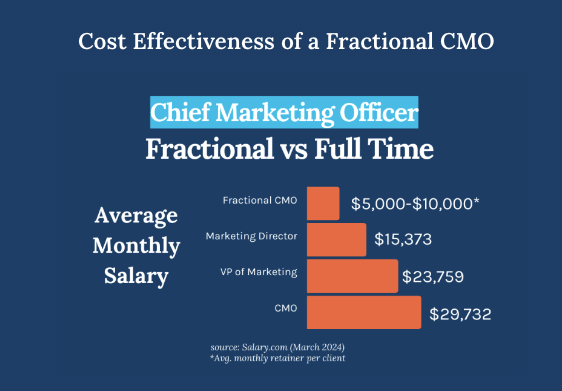

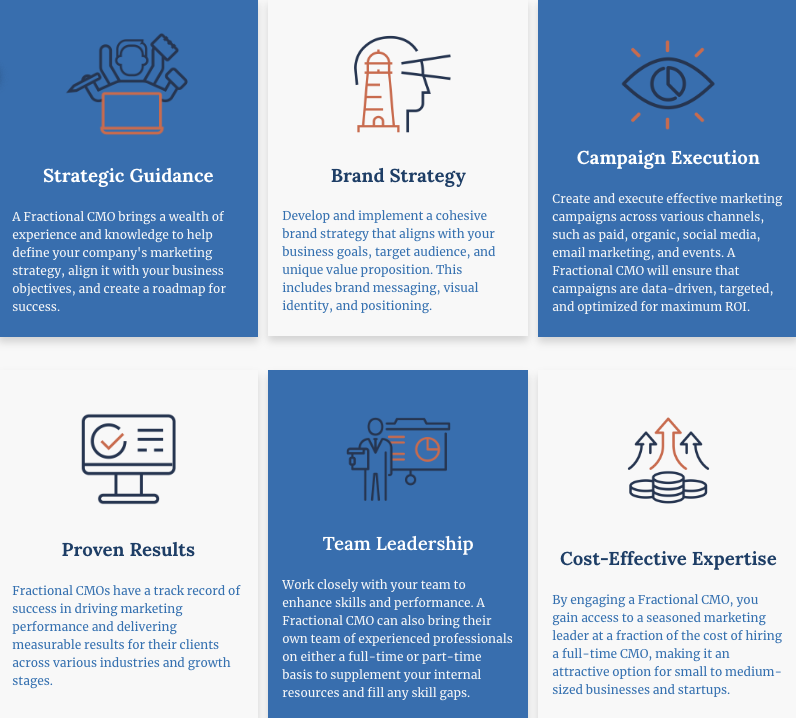

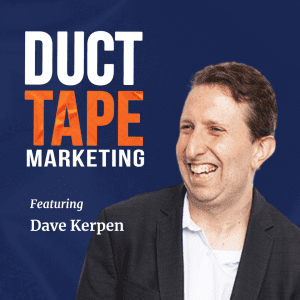
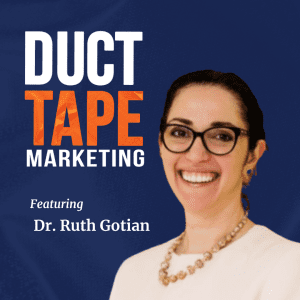
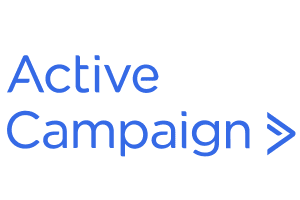
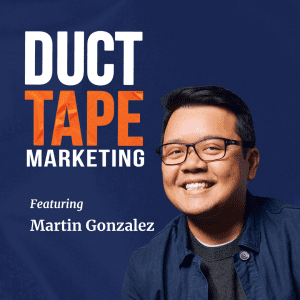 In this episode of the Duct Tape Marketing Podcast, I interviewed Martin Gonzalez, a seasoned expert in startup dynamics and co-author of “The Bonfire Moment: Bring Your Team Together to Solve the Hardest Problems Startups Face.”
In this episode of the Duct Tape Marketing Podcast, I interviewed Martin Gonzalez, a seasoned expert in startup dynamics and co-author of “The Bonfire Moment: Bring Your Team Together to Solve the Hardest Problems Startups Face.”